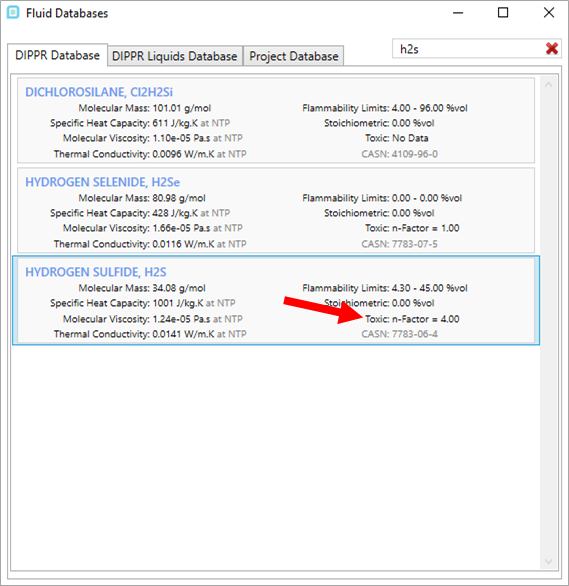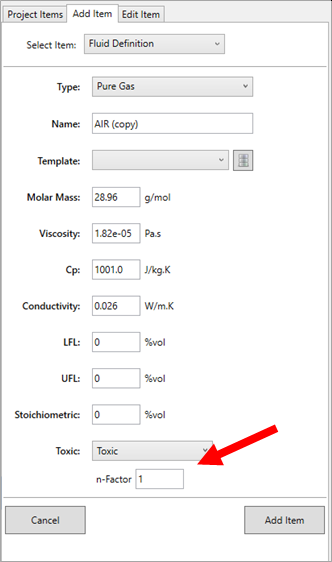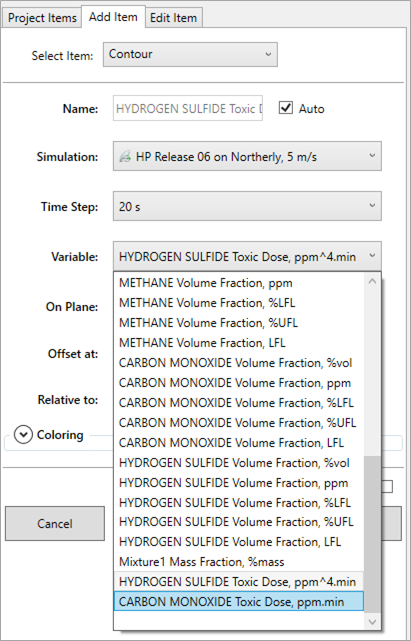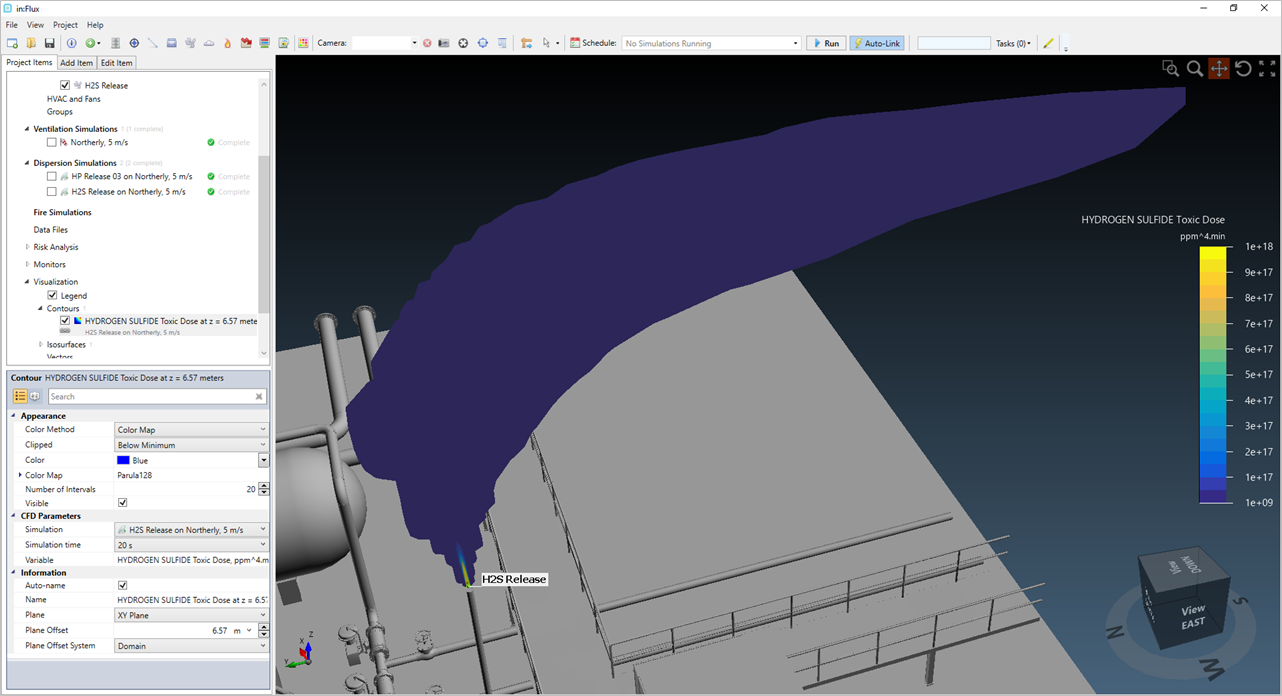Toxic Dose Variable
As of version 3.0 a toxic dose variable can be reviewed for transient simulations with a toxic component.
You can view if a component is toxic by looking at UK HSE Table for Specified Level of Toxicity (SLOT). For convenience, in:Flux has listed the "n-Factors" from this table in the Fluids Database. If you open the Fluids Database and find that a component lists an n-factor, it will be available to contribute to the toxic dose variable. Below shows Hydrogen Sulfide, H2S, has an n-Factor of 4.00. You can follow the link above for more details on how the n-Factor is determined for SLOT and Dangerous Toxic Load (DTL) assessments.

If the component you are looking for is not available, you can define a new pure gas and apply an n-Factor to these to make new toxics.

When simulations complete that have toxic gases, you can select the dose wherever you can select variables, e.g. monitor points, monitor lines, contours, isosurfaces, etc... Note, these variables are only available for transients.

Below shows a contour of Hydrogen Sulfide, H2S, toxic dose for a 50mm multi-component mixture with 5% being H2S.

You will find that in:Flux will provide a toxic dose variable for each component separately. This is because, for some clients, the DTL analysis only considers the worst case of each component rather than considering compounding effects from multiple toxic exposures at once.
Thermal Dose Variable
The above will also apply to pool and jet fire simulations, i.e. if a toxic component is part of a transient fire simulation a thermal dose variable will be available when post-processing.
Important Things to Consider:
-
For long-range dispersion, things like stability class play an important role and in fact can dominate over near-field features. As CFD can only accurately model neutral stability (which is true for ALL CFD codes), it may not be the right tool for analysis. Gaussian models, e.g. PHAST, are good tools for these long-range dispersion cases.
-
If CFD software claims to implement stability classes other than neutral stability, one should examine and compare these results with the gaussian model (e.g. PHAST) as the results will differ drastically, even without geometry items present.
-
-
If there are near-field effects with geometry, CFD could be used to determine the initial dilution which can then be used as a source term for the gaussian model to handle the long-range effects.